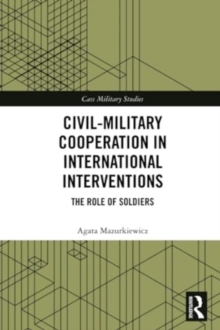
Understanding Battlefield Coalitions Hardback
Edited by Rosella (Boston University, USA) Cappella Zielinski, Ryan (University of Pittsburgh, USA) Grauer
Part of the Cass Military Studies series
Hardback
Description
This book improves our understanding of battlefield coalitions, providing novel theoretical and empirical insight into their nature and capabilities, as well as the military and political consequences of their combat operations.
The volume provides the first dataset of battlefield coalitions, uses primary sources to understand how non-state actors of varying types form such groupings, reports interviews with policymakers illuminating North Atlantic Treaty Organization operations, and uses cases studies of various wars waged throughout the nineteenth, twentieth, and twenty-first centuries to understand how other such collectives have operated.
Part I introduces battlefield coalitions as an object of study, demonstrating how they are distinct from other wartime collectives.
Using a novel dataset of actors fighting in 492 battles during interstate wars waged between 1900 and 2003, it provides, for the first time, a comprehensive portrait of the universe of battlefield coalitions.
Part II explores processes and dynamics involved in the formation of battlefield coalitions, addressing how potential coalition members prepare for future battles in peacetime (as well as the consequences of such preparations) and the dynamics of mission design.
Part III focuses on how battlefield coalitions are organised and fight when combat ensues, notably their decision-making rules and practices, command structures, and learning capacities.
Part IV addresses three curious tendencies observed in the operations of battlefield coalitions: partners under-providing effort in combat, rebels and terrorist networks persisting in cooperation even when their interests diverge, and members defecting from the collective.
Part V concludes with a chapter outlining for future researchers what we know about battlefield coalitions and what remains to be understood. This book will be of much interest to students of military and strategic studies, defence studies and International Relations.
Information
-
Out of stock
- Format:Hardback
- Pages:258 pages, 6 Tables, black and white; 8 Line drawings, black and white; 8 Illustrations, black and w
- Publisher:Taylor & Francis Ltd
- Publication Date:11/09/2023
- Category:
- ISBN:9781032508375
Information
-
Out of stock
- Format:Hardback
- Pages:258 pages, 6 Tables, black and white; 8 Line drawings, black and white; 8 Illustrations, black and w
- Publisher:Taylor & Francis Ltd
- Publication Date:11/09/2023
- Category:
- ISBN:9781032508375










